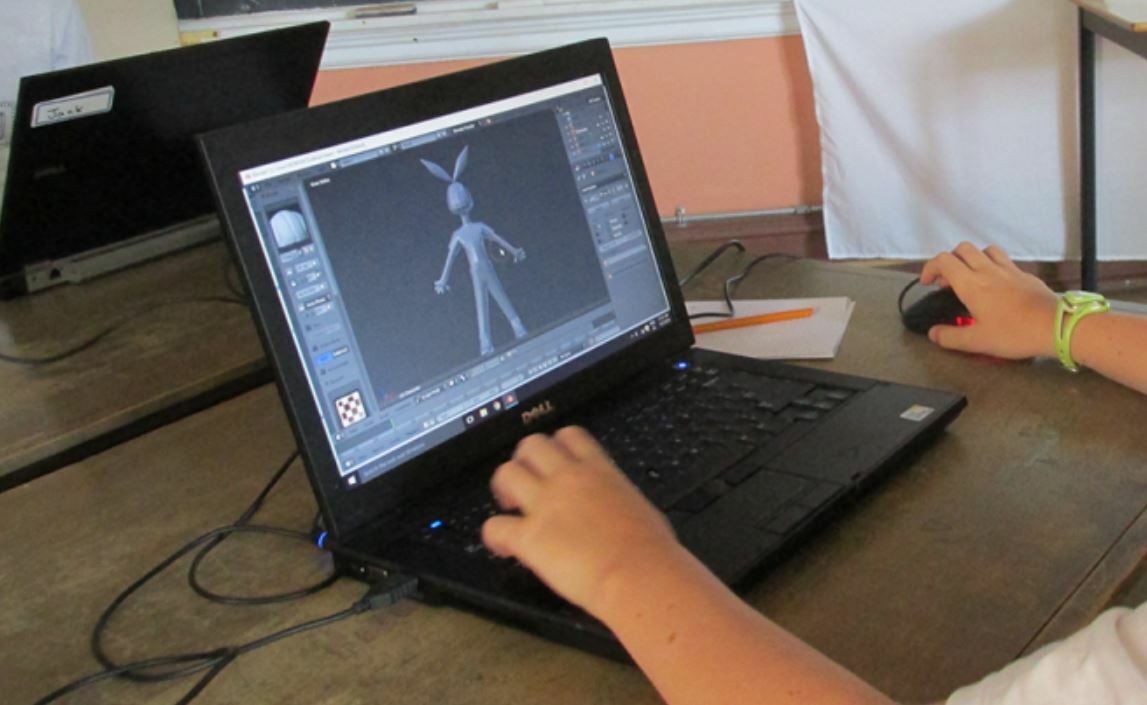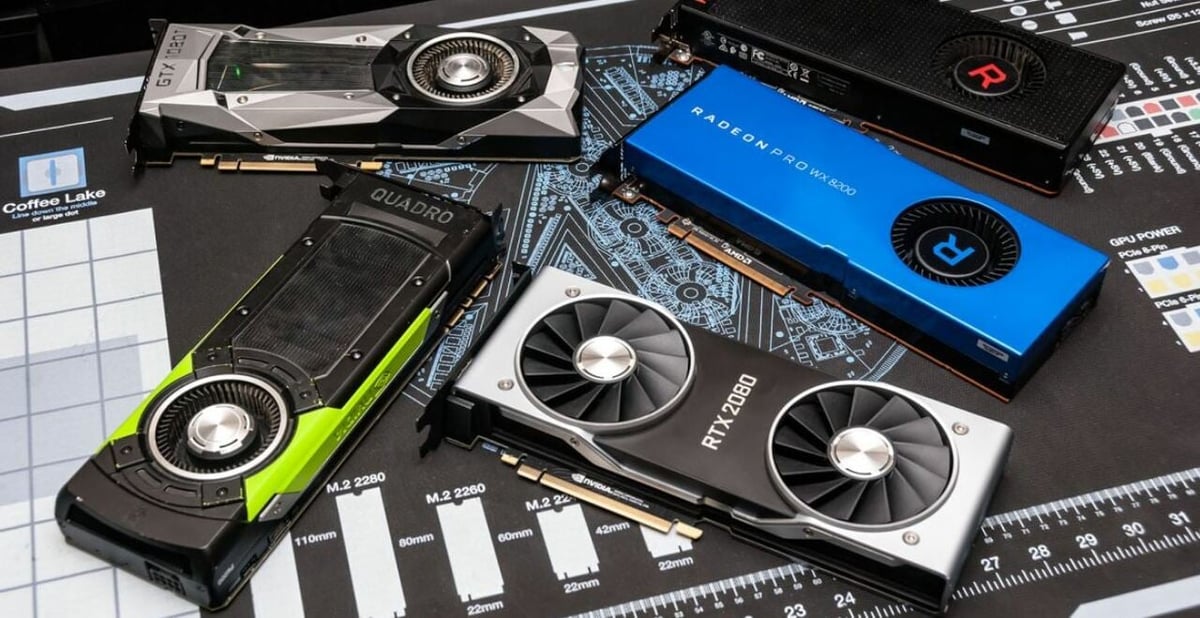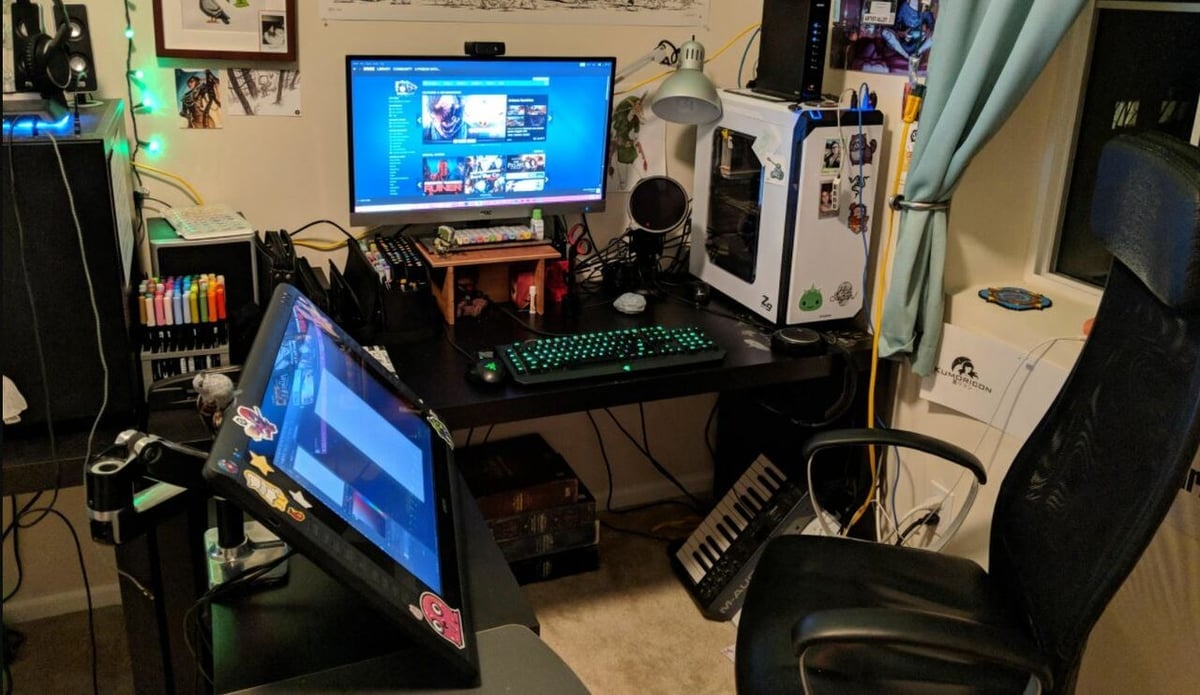Blender is one of the most powerful 3D graphic design programs out there. It provides its users with an open-source platform to use an extensive range of graphic design tools. Blender is used by all sorts of makers, from individual hobbyists to large corporations like Facebook and even TV and movie producers like the makers of The Hunger Games.
Blender has loads of features covering a wide range of graphic design methods that make the program useful to those looking to make art, films, practical models (including 3D printable designs), and more. On Blender, you can find tools for 3D modeling, animation, textures, rendering, sculpting, scripting, UV editing, shading, and more.
Although it’s free to download, Blender and its many features can’t be used by everyone. Like most software, Blender has minimum standard requirements for the hardware and software (mostly hardware) on your computer to operate effectively.
In this article, we’ll go over the hardware and software requirements for using Blender, including both the absolute minimum specs and the preferred hardware for optimized performance. It’s important to note that we’ll be discussing the requirements for the current stable release of Blender, Blender 3.0. However, the information should still be helpful if you’re using other versions.
Why Does It Matter?

Your device’s hardware and software components determine its computing capabilities, and different programs require different amounts of computing power. For example, you can’t run a Chrome browser on an old calculator because the calculator doesn’t have the computing power and a few other features (like an internet connection) to load the application. Blender is considered a fairly intensive application concerning computing power due to its many features.
One of the primary uses of computing power on Blender is for rendering, which is the process of loading in the graphic details of specific models and images. Blender’s rendering tools essentially lie on a spectrum, as some are significantly more performance-intensive than others.
Better specs on your device will allow you to use intensive rendering features with less lag or fewer crashes. Examples of high-intensity rendering features on Blender include subdivision surface modifiers with many levels (smooths out geometric models), intricate textures, and cycles rendering. Examples of lower-intensity Blender tools that may not require powerful specs include basic geometric modeling, coloring, and incomplex sculpting.
Minimum Requirements

First off, the absolute minimum hardware and software specs to run a program should never be what you’re looking to meet. Using the minimum specs should allow you to download and use the program’s most basic features. However, the program will definitely be pretty slow, and you may not be able to use the more intensive features without crashes.
Nonetheless, the list may still be useful to some users to determine what the low bar is. Below, we’ve provided a list of Blender’s minimum requirements, based on the information provided from Blender’s website and other sources.
Requirements
- Operating system: Windows 8.1+, MacOS 10.13+, or Linux
- Storage space: ~500 MB
- Display: 1280×720, 24 bit
- CPU: 64-bit dual-core with SSE2 support, 2 GHz
- RAM: 8 GB
- Graphics card: Any GPU card operating on OpenGL 3.3 GPU with 2 GB RAM
- Mouse: Standard mouse, trackpad, or pen and tablet
Recommended Setup

If you want to go beyond the minimum specs and get the most out of Blender, you’ll need some upgrades. Better hardware will optimize your Blender experience and avoid significant lagging, crashes, and other issues. In this section, we’ll go over a list of preferred device specifications based on the insight from community users, benchmark reviews, and Blender’s optimal requirements list.
This list of device specifications below is more than capable of running Blender at a high-performance level and should allow you to use all of the features of Blender. However, think of this list more as a starting point as everyone’s setup is different, and you may have a specific use for Blender in mind that may not require all of these specifications.
Requirements
- Operating system: Windows 8.1+, MacOS 10.13+, or Linux
- Storage space: 1 TB
- Display: 2560×1440, 24 bit (maybe even two)
- CPU: 64-bit eight-core with SSE2 support, 2.9+ GHz, (e.g. AMD Threadripper 3990X, 3970X, 3960X; Intel i9 10980XE, 10900k)
- RAM: 32+ GB
- Graphics card: High-quality GPU card or dual-graphics card with 12+ GB RAM (including NVIDIA GeForce RTX 2080 Ti, RTX 1660 Ti, RTX 2060, and AMD Radeon VII, RX 5700 XT, RX 5600 XT)
- Mouse: Three-button mouse or pen and tablet
Make It Your Own

In all likelihood, you’ll be aiming for more than the basic requirements, but might not want the full investment of the recommended setup. So let’s go over what’s important when putting together a personalized list of Blender hardware.
First, make sure to think about what you plan to use Blender for. If you’ll be rendering complex scenes with textures and lighting, you should be trying to get the best specs possible. However, if you want to make simple models, going all-out isn’t very practical. Also consider how often you’ll be using the program. If you plan on using Blender for long stretches of time, it might be worth investing in a better mouse, screen, keyboard, and maybe even a drawing tablet and pen. On the other hand, if you’re experimenting and trying something new, you may not need the best hardware, at least not immediately.
Another important element of your Blender-running device is the CPU and GPU. Although Blender, being a rendering tool, may lead you to believe that it will be very GPU-intensive, Blender is predominantly CPU-intensive. That’s because most of Blender’s work when rendering or processing a model is calculating the positions of vertices, angles, and other more mathematical relationships.
No matter how elaborate your setup will be, make sure that you have enough space on your computer to download and store the programs you need. One advantage of Blender is that it can be stored in many different places, including external locations such as a hard drive, USB, or network-attached storage device. Storing Blender in an external location allows you to run Blender as usual while conserving storage space on your own device.
And don’t forget about the RAM for both your CPU and GPU! Usually, the more RAM, the merrier; however, there’s no need to go overboard. It’s a common misconception that more RAM equals better performance. This is not the case as both your CPU and GPU RAM rely on the processor of the CPU and GPU to keep up, so adding a lot of RAM on a slow GPU and CPU will still result in slow performance.
Alternatives

Finally, if you’re realizing that Blender may require too much of your computer, there are alternatives! While these other options probably won’t have as many powerful features and capabilities as Blender, they also have a much lower bar for the minimum hardware and software required. Below is a small list of Blender alternatives and a little about each one:
- Natron is an open-source application for motion graphics and visual effects. While it has fewer graphic design features than Blender and requires a larger file size of 5 GB, it needs only 3 GB of processing RAM to work.
- Onshape is a 3D modeling tool that is very limited in terms of rendering tools, but it has extremely low storage requirements. Onshape is web-based and utilizes the cloud to allow you to design 3D models online, so you don’t have to download anything. Although you should have at least 8 GB of processing RAM, you don’t need to have any storage space available if you already have a web browser, like Chrome, installed.
- KeyShot is a 3D rendering and animation tool with many similar features to Blender, just fewer modeling capabilities. KeyShot takes up 2 GB of disk space, which is a good bit more than Blender; however, KeyShot only requires 2 GB of processing RAM. Another great feature is that KeyShot allows you to pick between using your CPU or GPU for rendering models.
License: The text of "Blender 3.0 Software Requirements: All You Need to Know" by All3DP is licensed under a Creative Commons Attribution 4.0 International License.
